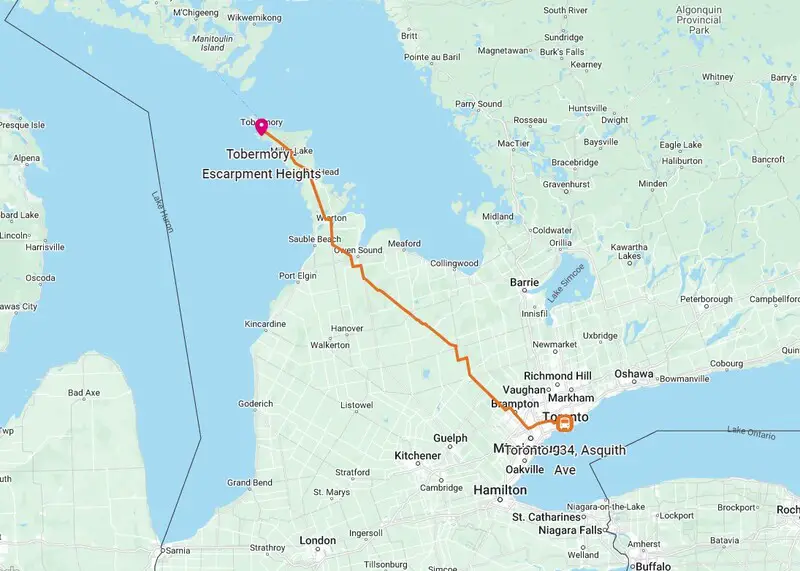Get ready to dive into a weather showdown between the mighty cities of Ottawa and Toronto! While both cities boast unique climates, there’s no denying their charm in every season. From frosty winters to balmy summers, we’ll explore what makes these cities tick when it comes to weather. So grab your umbrella or sunscreen because we’re about to embark on a delightful journey through Ottawa and Toronto’s ever-changing climates. Let’s find out which city wears the crown for being the coldest in Canada!
While both cities certainly have their fair share of cold days and snowy landscapes during winter, Ottawa might take the crown for being just a tad colder than Toronto.
The Battle of the Chills: Ottawa vs Toronto – Which City is Colder?
Let’s talk about the temperature in our beloved cities! Ottawa and Toronto are known for their diverse climates, offering unique experiences throughout the year. You can expect a wide range of temperatures in Ottawa, from scorching summers to chilly winters. During summer, the mercury can rise to a sizzling 30°C (86°F), creating the perfect conditions for outdoor adventures. As for winter, brace yourself for some frosty days! The coldest day recorded in Ottawa dipped to a bone-chilling -38.9°C (-38°F).
Let’s focus on Toronto, where temperatures vary dramatically throughout the seasons. Summers in Toronto can be hot and humid, with average highs reaching around 27°C (81°F). This is when you’ll want to visit the city’s beautiful beaches and enjoy some refreshing dips in Lake Ontario. When winter arrives, prepare for cooler temperatures that can drop as low as -25°C (-13°F). Brrr!
Whether living in Ottawa or Toronto, it’s always good to watch those temperature changes and dress accordingly. So bundle up during those cold snaps and embrace the warmth during those sunny days!

Winter wonderlands await in Ottawa and Toronto! With snowfall blanketing these Canadian cities, embracing the chilly season and indulging in exciting winter activities is time. Whether you’re in Ottawa or Toronto, there are plenty of ways to make the most of the snowy landscapes. There’s no shortage of joyous adventures, from ice skating on frozen canals to building snowmen in picturesque parks. So grab your mittens, bundle up, and dive into a winter wonderland like no other!
Brrr! Regarding colder weather, the battle between Ottawa and Toronto is on! While both cities experience chilly temperatures, it’s safe to say that Ottawa takes the crown for being the colder one. With its northern location and proximity to the Ottawa River, this city knows a thing or two about frosty winters. So, if you’re looking for a winter wonderland, bundle up and head to Ottawa for some severe cold-weather adventures. Stay warm out there!
Ottawa’s average temperature by month
From January to December, Ottawa experiences a wide range of temperatures. In January, the city tends to be chilly with average temperatures hovering around -10°C (14°F). As winter transitions into spring, March sees a slight increase with averages of -3°C (27°F). By April, Ottawa starts to bloom as the average temperature rises to 6°C (43°F).
As summer arrives, May brings pleasant weather with an average temperature of 15°C (59°F). June is when Ottawa truly begins to bask in warmth as temperatures reach an average high of 24°C (75°F). July and August are peak summer months with averages ranging from 26-28°C (79-82°F), perfect for outdoor activities and enjoying sunny days.
As autumn paints the city in vibrant hues, September brings comfortable weather at around 20°C (68°F). October sees a gradual drop as fall takes hold with an average of 11°C (52°F), followed by November dipping further down to 2°C (36°F).
Finally, December arrives with winter knocking on Ottawa’s door once again. The mercury drops to an average low of -8°C (18°F), creating a cozy atmosphere for holiday celebrations.
Toronto’s average temperature by month
In January, Toronto experiences its coldest temperatures with an average high of around -1°C (30°F) and an average low of -7°C (19°F). But don’t let that discourage you, as February brings some relief with slightly milder temperatures.
As spring arrives in March, Toronto starts to thaw out with average highs reaching 3°C (37°F) and lows around -4°C (25°F). By April, the city begins to bloom as temperatures climb to an average high of 11°C (52°F), offering a pleasant transition into warmer days.
Summertime in Toronto is truly a treat. In May, temperatures rise to an enjoyable average high of 18°C (64°F), ideal for outdoor activities. June sees even warmer days with highs averaging at 24°C (75°F), making it perfect for exploring parks or strolling along Lake Ontario’s shores.
July and August are Toronto’s hottest months, with July boasting an average high of 26°C (79°F) and August reaching its peak at around 25°C(77°F). These summer months offer plenty of sunshine and opportunities to soak up the city’s vibrant energy.
As autumn approaches in September, Toronto experiences mild temperatures with highs averaging at 21°C(70°F). October brings cooler days with colorful foliage as the city prepares for winter. November marks a gradual decline in temperature, with highs hovering around 8°C(46°F).
Finally, December embraces winter once again in Toronto. The city sees an average high temperature of -0.6 °C(31 °F) while nights can dip below freezing.
- Yonge-Dundas Square in Toronto is Now Called “Sankofa Square” - December 17, 2023
- Best Western Brooks’ SureStay Plus debuts in Alberta - December 16, 2023
- Air Canada Arrives in Tulum, Mexico as the First Canadian Airline - December 16, 2023




